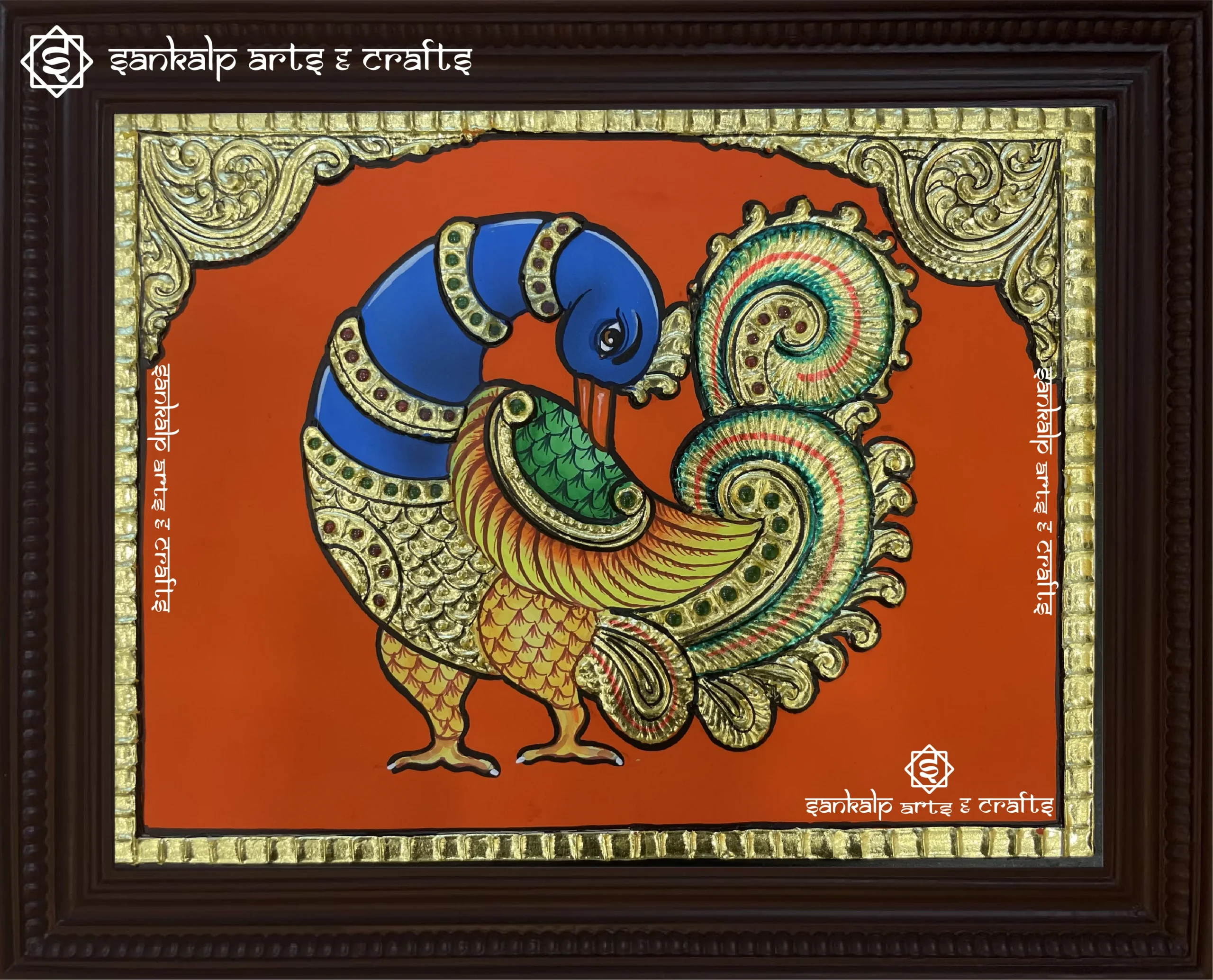Tanjore painting is a classical South Indian painting style, originating in the 16th century under the patronage of the Nayak and Maratha rulers of Thanjavur, Tamil Nadu. This royal art form combines painting, embossing, and embellishment, depicting Hindu gods, saints, and mythological stories using gold foil, gems, and bright colors.
The artist prepares a wooden plank or cloth mounted on a board with a paste of tamarind seed powder and chalk. The design is sketched and embossed using a mixture of glue and chalk to create a raised effect. Gold foil is applied over the embossed areas for a rich finish. Natural pigments are used to paint figures, typically gods or goddesses, with rich ornamentation.
The materials used are wooden plank or canvas base, gold foil for embossing, semi-precious stones for embellishments and natural colors and adhesives.
This art is characterised by embossed detailing using a relief method, the use of gold foil and gems for opulent decoration, and bold outlines and vibrant colors.





